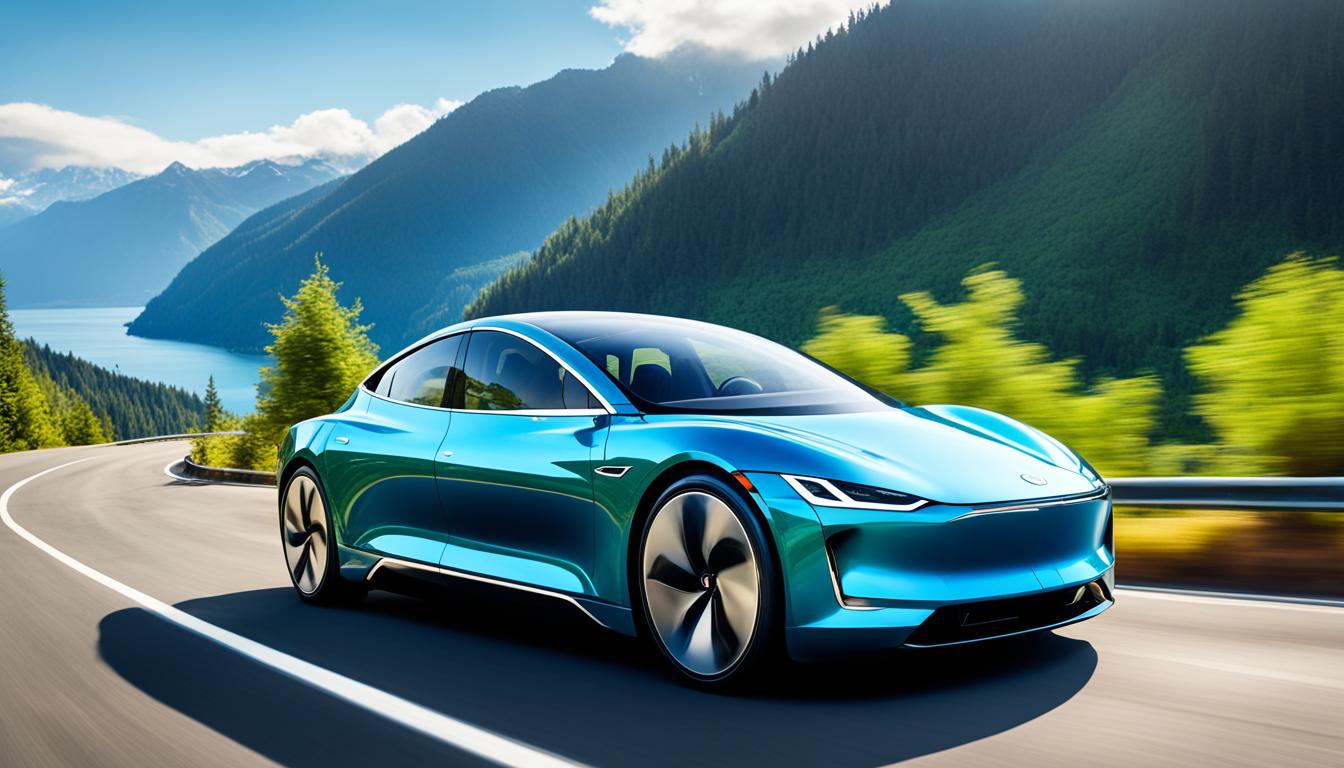
Driving Green: Exploring Zero-Emission Vehicles
As the world grapples with the urgent need to reduce carbon emissions and combat the effects of climate change, the role of zero-emission vehicles in shaping a cleaner future and greener roads has become increasingly crucial. According to the International Energy Agency (IEA), global energy-related carbon dioxide (CO2) emissions reached a new high in 2023, mainly due to increased fossil fuel use. This alarming increase highlights the pressing challenge of meeting global climate targets set in the Paris Agreement.
Key Takeaways:
- Global energy-related CO2 emissions reached a record high in 2023, emphasizing the need for immediate action to reduce emissions.
- Clean technologies like wind, solar, and electric vehicles have helped mitigate some emissions growth.
- The transition to zero-emission vehicles is a vital step in reducing emissions and addressing climate change.
- Investments in clean energy technologies and infrastructure are crucial for a sustainable and greener future.
- Transitioning to zero-emission vehicles will contribute to a more resilient and sustainable energy system.
The Impact of High CO2 Emissions
Global energy-related carbon dioxide (CO2) emissions reached a record high of 37.4 billion tonnes in 2023, marking a 1.1% increase from the previous year. This rise in emissions can be partly attributed to higher fossil fuel use, particularly in countries affected by droughts that have impacted hydropower generation. However, the expansion of clean technologies, such as wind, solar, and electric vehicles, has played a significant role in mitigating some of the emissions growth.
The record high in CO2 emissions underscores the enormous challenge of meeting the global climate targets established in the Paris Agreement. It is a wake-up call that urgent actions are needed to curb global emissions and transition toward a more sustainable and cleaner future.

“The increase in CO2 emissions further highlights the urgency of adopting clean technologies and reducing reliance on fossil fuels. We cannot ignore the impact of our energy choices on the environment and the imminent threat of climate change. It is imperative that we invest in renewable energy sources and accelerate the transition to a low-carbon economy.”
– Dr. Jane Collins, Environmental Scientist
While the expansion of clean technologies has been promising, there is still a substantial gap to bridge in order to achieve the necessary emissions reductions. The world needs to embrace sustainable alternatives and accelerate the deployment of clean energy solutions to address the urgent climate crisis.
The Urgency of Transitioning to Zero-Emission Vehicles
The vulnerability of our energy systems to climate change has become increasingly evident in the rise of global CO2 emissions. According to the International Energy Agency (IEA), carbon dioxide emissions reached a new high in 2023, highlighting the urgent need for a rapid transition to more resilient and renewable energy sources. This transition is crucial in mitigating the impacts of climate change and ensuring a sustainable future.
One significant factor contributing to the increase in CO2 emissions is the replacement of lost hydropower due to droughts, accounting for 40% of the emissions rise. This emphasizes the immediate need for a shift towards clean energy solutions. By investing in renewable energy sources, such as solar and wind power, we can reduce dependency on fossil fuels and promote a greener energy system.
Transitioning to zero-emission vehicles, particularly electric cars, is a crucial step in reducing emissions and combating climate change. Electric vehicles (EVs) produce no tailpipe emissions, resulting in cleaner air and decreased reliance on fossil fuel-powered automobiles. Encouraging the adoption of EVs through incentives and infrastructure development will contribute to a significant reduction in CO2 emissions from the transportation sector.
Moreover, investing in clean energy technologies and infrastructure is essential for achieving a sustainable and greener future. The expansion of charging stations, grid improvements, and renewable energy integration will further support the widespread adoption of zero-emission vehicles.
“Transitioning to zero-emission vehicles is an essential step in reducing emissions and mitigating the impacts of climate change.”
With the urgent need to address climate change and combat its detrimental effects, the transition to zero-emission vehicles represents a critical pathway. It is a tangible solution that not only reduces greenhouse gas emissions but also promotes technological innovation in the automotive industry. By embracing renewable energy sources and investing in clean transportation, we can pave the way towards a sustainable future for generations to come.
The Importance of Investments in Clean Energy Technologies and Infrastructure
To accelerate the transition to zero-emission vehicles, it is crucial to prioritize investments in clean energy technologies and infrastructure. These investments will help overcome the challenges associated with scaling up renewable energy sources and integrating them into the existing energy grid. By modernizing transportation infrastructure and expanding charging networks, we can ensure convenient and accessible support for electric vehicle owners.
Furthermore, the development of advanced battery technologies and increased research and development funding will drive innovation and efficiency improvements in the electric vehicle sector. Collaborative efforts between governments, industry leaders, and academic institutions are essential in catalyzing breakthroughs that enhance the performance and affordability of zero-emission vehicles.
In conclusion, the urgency of transitioning to zero-emission vehicles cannot be overstated. By prioritizing the adoption of renewable energy sources, investing in clean energy technologies and infrastructure, and promoting the widespread use of electric vehicles, we can significantly reduce CO2 emissions and mitigate the impacts of climate change. The transition to a sustainable and greener future begins with conscious choices and collective action.
| Benefits of Transitioning to Zero-Emission Vehicles | Challenges |
|---|---|
|
|

Conclusion
The increase in global energy-related carbon dioxide (CO2) emissions underscores the urgent need for a sustainable and zero-emission future. While clean technologies like wind, solar, and electric vehicles have helped to mitigate some emissions growth, there is still much work to be done in order to meet global climate targets. Transitioning to zero-emission vehicles, combined with investments in renewable energy sources and infrastructure, is critical in reducing emissions and creating a cleaner, greener future on our roads.
The urgency of these actions cannot be overstated. By embracing zero-emission vehicles, we can significantly contribute to a more resilient and sustainable energy system, ultimately helping to combat climate change. This transition not only benefits the environment, but also promotes economic growth and reduces dependence on fossil fuels.
To achieve a sustainable future, it is essential that governments, businesses, and individuals prioritize the adoption of zero-emission vehicles. This requires a comprehensive approach, including the expansion of charging infrastructure, supportive policies, and incentives to encourage consumers and manufacturers to make the switch. Only by working together can we drive the necessary renewable energy transition and create a better, cleaner world for future generations.
FAQ
What are zero-emission vehicles?
Zero-emission vehicles refer to vehicles that produce no tailpipe emissions, such as carbon dioxide (CO2) or other pollutants. These vehicles are powered by alternative fuel sources, such as electricity or hydrogen, and offer a cleaner and greener transportation solution.
How do zero-emission vehicles contribute to a cleaner future?
Zero-emission vehicles play a crucial role in reducing greenhouse gas emissions and improving air quality. By eliminating or significantly reducing tailpipe emissions, these vehicles help combat climate change and promote a healthier environment for everyone.
What are the benefits of transitioning to zero-emission vehicles?
Transitioning to zero-emission vehicles brings multiple benefits. It reduces our dependency on fossil fuels, which helps to mitigate the impacts of climate change. Additionally, zero-emission vehicles can lower operating costs, improve energy efficiency, and promote technological innovation in the transportation sector.
How can I charge or refuel a zero-emission vehicle?
Zero-emission vehicles can be charged or refueled using various methods, depending on the type of vehicle. Electric vehicles can be charged at home using a standard electrical outlet or at public charging stations. Hydrogen fuel cell vehicles can be refueled at specialized hydrogen refueling stations.
Are there enough charging stations available for zero-emission vehicles?
The availability of charging stations for zero-emission vehicles varies depending on the location. However, the number of charging stations is increasing rapidly as governments and private companies invest in charging infrastructure. Various online platforms and mobile applications can help locate nearby charging stations.
What range can I expect from a zero-emission vehicle?
The range of a zero-emission vehicle depends on the model and the type of technology it uses. Electric vehicles range from around 100 to 400 miles on a single charge, while hydrogen fuel cell vehicles can achieve similar ranges. Advances in battery technology are continuously extending the range of electric vehicles.
Are zero-emission vehicles more expensive than traditional vehicles?
Initially, zero-emission vehicles may have a higher upfront cost compared to traditional vehicles. However, they can provide long-term cost savings through lower fuel and maintenance expenses. Additionally, government incentives and subsidies are often available to help offset the initial purchase price.
Can I travel long distances with a zero-emission vehicle?
Yes, it is possible to travel long distances with a zero-emission vehicle, especially with the increasing availability of charging infrastructure. Electric vehicle owners can plan their trips using online route planners that indicate charging stations along the way. Hydrogen fuel cell vehicles also have the potential for long-distance travel, as refueling stations become more widespread.
What is the environmental impact of zero-emission vehicles compared to traditional vehicles?
Zero-emission vehicles have a significantly lower environmental impact compared to traditional vehicles. By eliminating or reducing tailpipe emissions, they help to reduce air pollution and greenhouse gas emissions, thereby contributing to mitigating climate change and improving air quality.
Can zero-emission vehicles be powered by renewable energy sources?
Yes, zero-emission vehicles can be powered by renewable energy sources, such as solar or wind power. Charging electric vehicles with electricity generated from renewable sources further reduces their carbon footprint and supports the transition to a sustainable energy future.
